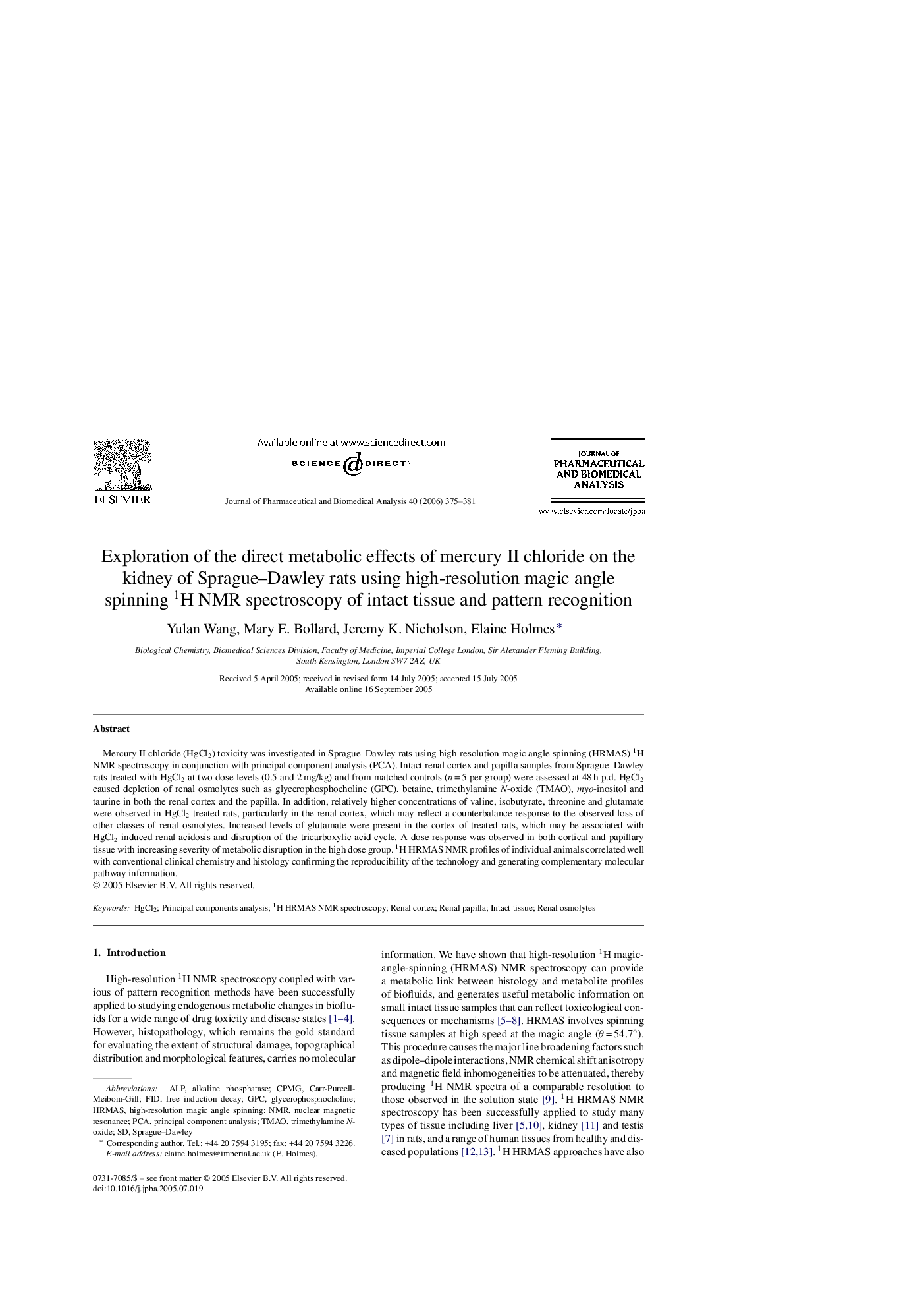| Article ID | Journal | Published Year | Pages | File Type |
|---|---|---|---|---|
| 1223972 | Journal of Pharmaceutical and Biomedical Analysis | 2006 | 7 Pages |
Mercury II chloride (HgCl2) toxicity was investigated in Sprague–Dawley rats using high-resolution magic angle spinning (HRMAS) 1H NMR spectroscopy in conjunction with principal component analysis (PCA). Intact renal cortex and papilla samples from Sprague–Dawley rats treated with HgCl2 at two dose levels (0.5 and 2 mg/kg) and from matched controls (n = 5 per group) were assessed at 48 h p.d. HgCl2 caused depletion of renal osmolytes such as glycerophosphocholine (GPC), betaine, trimethylamine N-oxide (TMAO), myo-inositol and taurine in both the renal cortex and the papilla. In addition, relatively higher concentrations of valine, isobutyrate, threonine and glutamate were observed in HgCl2-treated rats, particularly in the renal cortex, which may reflect a counterbalance response to the observed loss of other classes of renal osmolytes. Increased levels of glutamate were present in the cortex of treated rats, which may be associated with HgCl2-induced renal acidosis and disruption of the tricarboxylic acid cycle. A dose response was observed in both cortical and papillary tissue with increasing severity of metabolic disruption in the high dose group. 1H HRMAS NMR profiles of individual animals correlated well with conventional clinical chemistry and histology confirming the reproducibility of the technology and generating complementary molecular pathway information.
